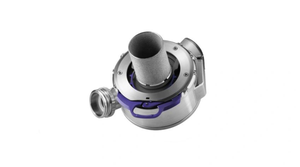Earthquakes, Medical Devices, and You
March 13, 2013
Collapsed General Hospital in Mexico City following September 1985 earthquake. |
Let's face it: Earthquakes are a way of life in California. Just this week, a 4.7-magnitude temblor epicentered east of San Diego rattled windows, flung groceries from supermarket shelves, and jarred nerves.
But what does all this have to do with medical devices? For one thing, California represents the largest concentration of medical device research, development, and manufacturing in the United States. In addition, earthquakes don't just kill people; they can also disable mission-critical medical devices and hospital systems, exacerbating the human toll.
That's where earthquake early-warning systems come in. One company, for example, Seismic Warning Systems (Scotts Valley, CA), notes that its earthquake-warning product can alert operating rooms, catheter labs, and surgery centers, helping to avert surgical damage. Such systems can also enable medical personnel to secure equipment before the onset of an earthquake, monitor and shut off gas lines, control sterilizers in order to prevent ethanol oxide leaks, and lock needed equipment inside sterilizers. Hospitals, according to the company, can protect information assets by freezing computer saves to disk, as well as avoid computer damage and data loss from such equipment as MRI systems.
The need to implement such a warning systems is eminently reasonable, sensible, and--frankly--obvious. Indeed, an earthquake early warning system being tested in California gave seismologists up to 30 seconds to prepare for this week's temblor, according to the Los Angeles Times.
Yet, when it comes to coughing up the funds for such a system, legislators are standing in the way. "It remains unclear how much support the system has in Sacramento," remarks another article in the Los Angeles Times. "Some politicians have warned against additional spending. And earthquake legislation has generally fared poorly in the last decade, particularly proposals that would add costs for property owners."
Thus, researchers have had to rely on a measly $400,000 annually to develop technology for the system, in addition to a $6-million grant in 2011 from the Palo Alto-based Gordon and Betty Moore Foundation. "But experts estimate upgrading monitors and sensors across California--there are thousands of them--would cost up to $80 million.
Compare this irrational miserliness with the situation in other countries. "The U.S. is behind Japan as well as Mexico, Taiwan, Turkey and even Romania in creating early alert systems," the Los Angeles Times observes. "Last year, residents in Mexico City were warned shortly before the shaking from a 7.4 quake that began near Acapulco arrived."
It's one thing to manufacture medical devices. It's another to protect them. --Bob Michaels
About the Author(s)
You May Also Like


